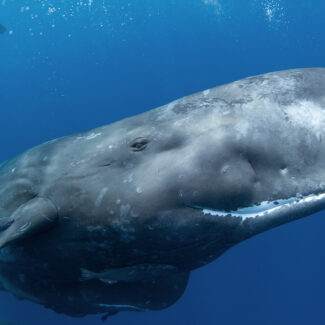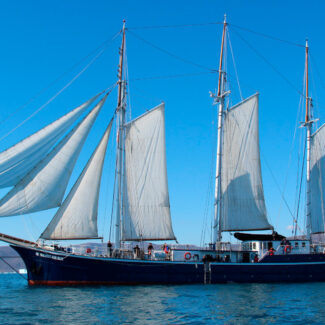Antarctica Money: Currency, Banks & ATMs?
- Antarctica Money Matters: What Currency is Used in Antarctica Aboard Ships?
- What is the Currency of Antarctica at Research Stations?
- Is There an ATM in Antarctica?
- The Antarctica Dollar
- Antarctica Travel: Currency in Argentina & Chile
- What Currency is Used in the Falkland Islands, South Georgia, and the South Sandwich Islands?
- Polar Payments
Antarctica is not a country; no nation controls this great white wilderness. As such, that means there’s no official currency of Antarctica. So how does commerce go down on board White Continent-bound cruise ships, in major ports of embarkation, and at the remote research bases that form Antarctica’s only outposts of civilization?
Antarctica Money Matters: What Currency is Used in Antarctica Aboard Ships?
Most people visit Antarctica via cruise ships and sightseeing expedition vessels. The official onboard currency depends on the tour operator, but typically both U.S. dollars and Euros are usable.
From meals to activities, however, your cruise fee covers much of your expenses during the voyage (though you may be paying separately for things like drinks). Add-ons and extras—for example, guided kayaking trips, onshore campouts, and other particular excursions—tend to be paid for ahead of the trip. (Obviously, what’s covered and what’s not depends on the tour operator and the itinerary you’ve chosen.)
You can usually opt to tip guides and other staff via credit card or cash, often in a lump payment near the end of the cruise. A rule of thumb is $10-20 USD per person per day, but it is very much at your discretion.
What is the Currency of Antarctica at Research Stations?
Antarctic research stations mainly use the home currency of whatever nation operates them. Because it’s so close to the U.S.-run McMurdo Station—and frequently visited by Americans—New Zealand’s Scott Base accepts both New Zealand dollars and USD.
While there’s no official “Antarctic currency,” life at research stations like the Vernadsky Base often involves unique ways of exchange or relies on home country currencies for necessities. Visiting such a station can offer a fascinating glimpse into the collaborative spirit that underpins scientific work on the continent, showing how different nations contribute to its exploration and preservation.
Is There an ATM in Antarctica?
There aren’t any Antarctica banks, which probably doesn’t come as a shock. However, the world’s southernmost ATMs—and the only ones located on the Antarctic continent—reside at McMurdo Station, a pair operated by Wells Fargo. One ATM here is in operation at any given time, the other being used for spare parts. (These machines—which have been called the loneliest ATMs in the world—are serviced, but only every couple of years given the remoteness.) Personnel at McMurdo can use an ATM to get cash for use in the station’s various establishments, including cafes, pubs, general store, and post office.
The Antarctica Dollar
We’ve already established that there’s no official currency in Antarctica. However, there is an Antarctic dollar: a fake banknote emblazoned with bottom-of-the-world scenery or wildlife that, while not qualifying as legal tender anywhere, is definitely prized as a collectible. You may well consider stocking up on some “Antarctic paper money” as a souvenir of your trip to the White Continent, purchasable online from the aptly named Bank Of Antarctica website.
Antarctica Travel: Currency in Argentina & Chile
The majority of travelers cruising or flying to Antarctica do so out of South America: often traveling from, say, Buenos Aires, Argentina to the Tierra del Fuego port of Ushuaia for a cruise across the Drake Passage, or to Punta Arenas, Chile to fly directly into the Antarctic archipelago of the South Shetland Islands.
Argentina’s official currency is the Argentine peso, but U.S. dollars are widely accepted in the country as well. So are major credit cards. Chile uses the Chilean peso, and the USD is not quite so easy to use there. In the main tourist cities of both countries—Ushuaia and Punta Arenas included—ATMs tend to be easy enough to track down.
As we’ve already made clear, you don’t need to worry about an Antarctica currency exchange rate while exploring the White Continent. But you may need to exchange money in Argentina or Chile, in which case you’ll want to study current rates beforehand. Travelers cheques are generally not advised for either country as they are hard to change and given a very low rate.
Argentina, like the US, is a very tipping oriented country and tips are expected. In Chile, tipping isn’t quite as prevalent, but always very much appreciated and still expected in restaurants. As such it is wise to keep a stock of small denomination USD notes handy. If you plan to travel extensively in Argentina or Chile, a rough budget of $50-100 USD per person per day for meals may be helpful.
As you prepare for your Antarctic adventure, keep in mind that your journey will likely begin in a gateway city like Ushuaia, Argentina, or Punta Arenas, Chile. Understanding the local currency and banking options in these vibrant starting points is essential for a smooth and stress-free beginning to your incredible expedition!
What Currency is Used in the Falkland Islands, South Georgia, and the South Sandwich Islands?
The pound is the official currency in Falkland Islands as well as South Georgia and the South Sandwich Islands, all of which are British Overseas Territories often woven into Antarctic itineraries. The Falklands has its own unique banknote in the form of the Falkland Islands pound. (British pounds are readily accepted in the Falklands, but the reverse isn’t always true: British citizens may have trouble using officially printed Falkland Islands currency back home.)
Along with pounds sterling, U.S. dollars and Euros are accepted at the post office and gift shop in Grytviken, South Georgia, as are VISA and MasterCard credit cards. (The South Sandwich Islands are uninhabited and, if you’re visiting them on a cruise, you won’t be making any onshore transactions.) In the Falkland Islands capital of Stanley, eateries, hotels, and other establishments generally accept both pounds sterling and U.S. dollars as well as major credit cards; an ATM is also available.
When visiting the fascinating sub-Antarctic islands like South Georgia, pictured here, it’s useful to know that their currencies often align with the UK, as they are British Overseas Territories. This picturesque view of Grytviken, with its poignant whaling history and a beautiful church, reminds us of the diverse stories and logistical considerations that enhance an Antarctic journey.
Polar Payments
While the cost of an Antarctica cruise may be expensive, thanks to their near all-inclusive nature and ample acceptance of multiple currencies and credit cards, expenditure whilst on expedition is relatively small, and any necessary polar payments, although infrequent, can be easily made.
Disclaimer
Our travel guides are for informational purposes only. While we aim to provide accurate and up-to-date information, Antarctica Cruises makes no representations as to the accuracy or completeness of any information in our guides or found by following any link on this site.
Antarctica Cruises cannot and will not accept responsibility for any omissions or inaccuracies, or for any consequences arising therefrom, including any losses, injuries, or damages resulting from the display or use of this information.










